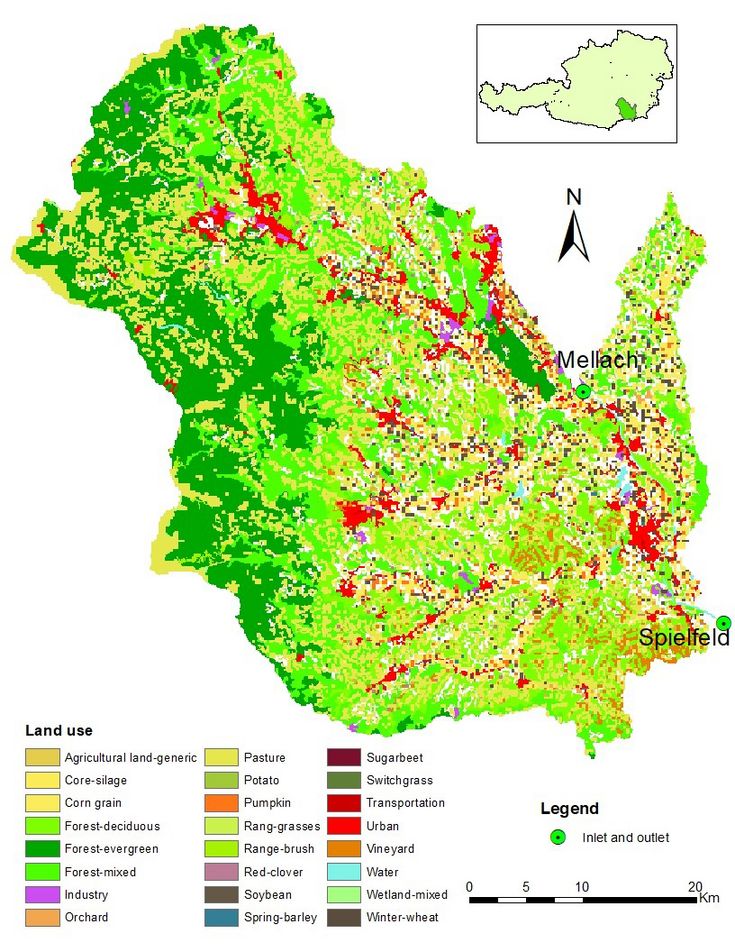The partitioning and processes of reactive nitrogen emissions under scenarios of anthropogenic changes in agricultural watersheds
SUPERVISOR: Karsten SCHULZ
PROJECT ASSIGNED TO: Cong WANG
The study site is the lower Mur catchment in Austria, from the gauges Mellach to Spielfeld (2279km2). The lower Mur catchment has intensive agricultural areas (24.82%) and the major crops include grain corn, winter wheat, pumpkin and vineyards. Due to the porous sedimentary soil layers, the nitrate concentrations in the groundwater since measurements in the 1980ies have been above the groundwater environmental limit of 50 mg/L. The drinking water for the city of Graz and for most of south and eastern Styria mainly stems from groundwater also in part from this catchment. Therefore, the lower Mur catchment is vulnerable to changes in future agricultural management practices and climate. The processes of reactive nitrogen emissions will be determined from the literature and a sub-model of N2O emissions will be implemented into the eco-hydrological model Soil and water assessment tool (SWAT). SWAT can simulate nitrogen emissions, including ammonia volatilization and nitrification, but does not simulate nitrous oxide (N2O) from denitrification. Climate change simulations will be applied to SWAT to determine reactive nitrogen emissions in the future. Also, future agricultural management practices will be determined that can reduce nitrogen emissions to the surface water, groundwater and air. Adaptation scenarios that will be examined can include changing sowing and harvesting dates, amount of fertilizer use, fertilizers type, intercrops, legumes, crops type and tillage system. Lower Mur watershed in Austria.
Link to HR21 research clusters: My research refers to all these four clusters but mainly links to "Connectivity" and "Governance".

